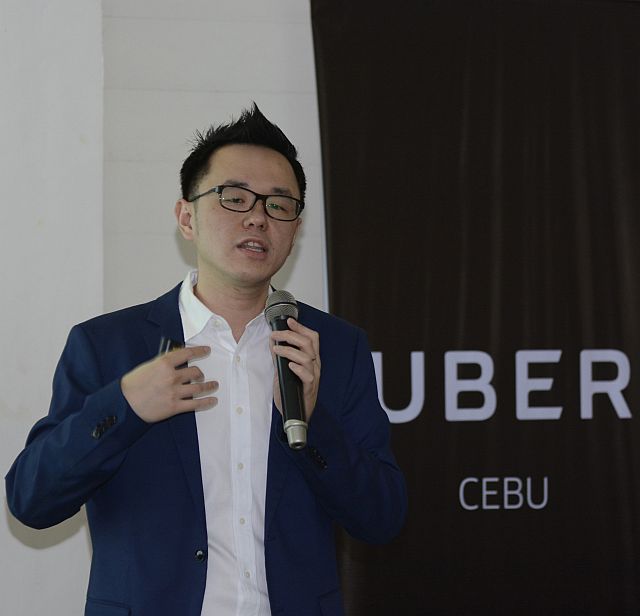Uber to tap middle to lower passenger market in Cebu

Laurence Cua, general manager of Uber Philippines, discusses in a press briefing the latest development of the American technology firm using the ride-sharing app in serving passengers. (CDN PHOTO/CHRISTIAN MANINGO)
A San Francisco-based online transportation network company is not only looking to change the Cebuano public’s perception about car ownership and lessen traffic, but it is also expanding its market to the middle and lower end sector of the market.
Uber Philippines, which has expanded its services in Cebu in December last year, is targeting more Cebuano riders or passengers by adopting a new cash payment option in Cebu, which is the first city in the Philippines this option is offered.
“We hope the introduction of new payment options, like cash, will give riders more choices to enjoy and pay for their Uber rides,” said Laurence Cua, Uber Philippines general manager.
Uber has been known for its cashless scheme where riders, who usually belong the middle- to high-end market, pay using their credit or debit cards, sparing them from drivers fumbling for change once they arrive at their destinations.
But clamor for other payment options such as cash in recent months was loud, particularly louder in Cebu, said Cua.
EJ dela Vega, Uber Cebu City lead, said the Philippine economy is growing fast but credit card penetration is presently only at 2 percent.
He said the move to add another payment option aims to attract more Uber users in Cebu.
Even before Cebu City, this has already been implemented in cities in India where credit card penetration is also quite low.
Cua also said that alongside the Philippines’ economic growth by at least 6 percent annually in the last six years is the increase in the public’s capacity to buy their own cars.
“(But) the problem is our roads are not getting any bigger. We, at Uber, want to be the alternative. We’re not trying to replace the idea of car ownership, but our aim is to make people rethink about buying a car,” he said in a press conference in Cebu City on Thursday.
Based on data from the Land Transportation Office (LTO), there were 681,033 motor vehicles registered in Central Visayas in 2014 with the number projected to grow 4 to 5 percent each year.
Cua said Uber wants to be part of the solution to traffic congestion in the country by giving riders a safe alternative to driving their own vehicles, thereby lessening the number of cars on the road.
Uber is a technology platform that easily connects riders to drivers through a mobile app.
He said that with Uber, one can get from one point to another in a safe and convenient way, free from the hassles of maintaining a car or even parking.
The San Francisco-based Uber launched in the Philippines starting with Metro Manila in February 2015, covering all 16 cities in the area.
In December of the same year, Uber expanded its operations to Cebu.
Cua said that at present, Uber has over 100 partner drivers in Cebu and close to 300 who have applied with the Land Transportation Franchising and Regulatory Board.
Dela Vega said Uber covers routes in Cebu City, Consolacion in the north to Talisay in the south as well as all of Mactan Island.
Uber has grown to operate in over 460 cities across 70 countries since it started operations in 2009.
Disclaimer: The comments uploaded on this site do not necessarily represent or reflect the views of management and owner of Cebudailynews. We reserve the right to exclude comments that we deem to be inconsistent with our editorial standards.
